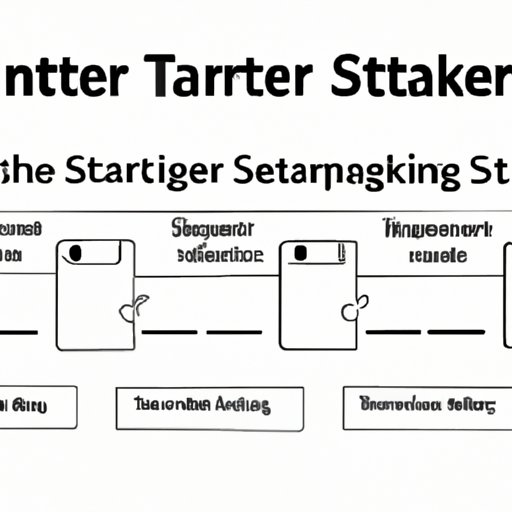
Introduction
Starter systems in cars are extremely important to ensure that the engine starts up smoothly. However, like all other parts of car systems, starters can also develop problems over time. Identifying these problems can be a daunting task for the average car owner. In this article, we will provide you with a step-by-step guide to testing a starter to identify potential issues.
Step-by-Step Guide
Before beginning the process of testing a starter, you will need a set of reliable tools and equipment. You will need a battery charger, a jumper wire, a multimeter, and a safety gear toolbox.
The first step is to ensure that your battery is fully charged. This will help you to eliminate any chance of your starter being the problem, when in fact, it’s a lack of power from the battery. You should use a battery charger to charge your battery.
The next step is to examine the battery cables to ensure that they are not corroded or loose. If they are, clean and tighten them as necessary.
You should then try to start your engine normally. If it does not start, you can use a jumper wire to bypass your ignition switch and connect the starter solenoid to the battery. This will allow power to flow directly to the starter motor.
You should then use a multimeter to check the voltage across the starter motor while someone turns the ignition key. If you do not detect any voltage, it is likely that your starter motor has failed and needs to be replaced.
Diagnostic Checklist
A diagnostic checklist is a great tool that can help you to identify any problems with the starter system. This checklist should include all potential problem areas of your starter system and the associated troubleshooting steps.
When checking for problems, be on the lookout for worn-out gears, a starter motor that is spinning but not engaging the flywheel, and a starter motor that is not spinning at all. Troubleshooting tips for each problem will vary depending on the specific issue you have identified.
Video Tutorials
Using a video tutorial to test your starter system is an excellent way to ensure that you are following the correct procedure. Videos are helpful because they offer a visual guide of the entire process. They also allow you to pause, rewind, and review specific steps as many times as needed.
A comprehensive video tutorial will cover all the necessary steps that you need to take to test your starter, even for those who may not have a clear understanding of the process initially. Having a clear view of all the necessary steps will help reduce confusion and improve the chances that you will succeed in testing your starter system effectively.
Common Mistakes to Avoid
One of the most common mistakes people make when testing starters is failing to follow all the relevant steps of the diagnostic checklist. The process is quite intricate, and missing a single step could mean missing a crucial problem that could ultimately lead to engine failure.
Other common mistakes include using the wrong tools, misunderstanding the required ampere rating for your starter motor, and attempting to jump-start a car without first checking for other potential problems.
Tips for Beginners
When starting out, it is always a good idea to keep things simple. You can start by unhooking the starter motor and checking that it spins properly when connected to a battery. It is also necessary to ensure that the starter motor has the correct voltage and amperage rating. Be sure to read the manufacturer’s instructions carefully before beginning any work.
Q&A Format
Some frequently asked questions about starters include how to tell when your starter is bad, what the warning signs of a bad starter are, and how to test for a starter motor failure. To ensure that the testing process goes smoothly, you should consult relevant resources when in doubt and periodically ask for advice from experienced technicians to avoid mistakes.
Conclusion
Testing your starter system is a crucial step in maintaining your car’s engine efficiency. By following the steps outlined above, you can detect and fix any potential problems with your starter motor. If the starter turns out to be faulty, it is always a good idea to get it replaced as soon as possible by a skilled professional.
Ultimately, the key to testing your starter system effectively is to remain focused, follow a checklist, use the proper tools, and seek advice from experienced technicians whenever necessary.





